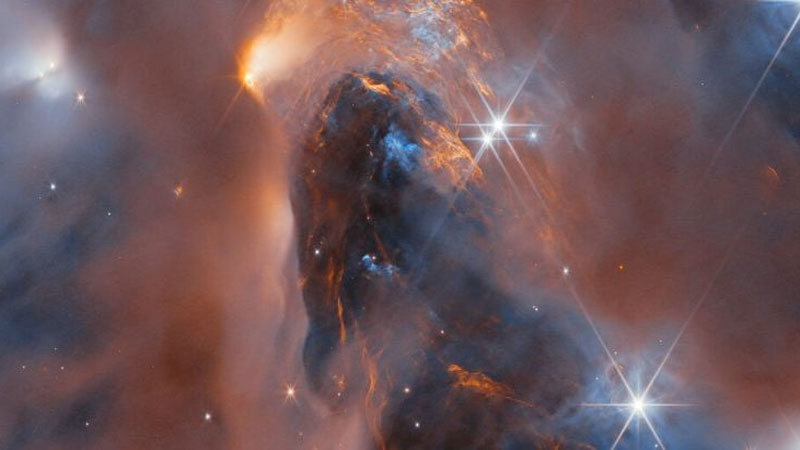New work searching for brown dwarfs and giant planets in regions of active star formation has revealed their presence in such zones is much greater than theory predicted. Webb’s infrared instruments literally dispersed the dust and gas of the nebulae, allowing us to peer into their depths like never before. The collected data will help study the boundary between the heaviest planets and the lightest stars, without which the picture of the life of stars remains incomplete.

Brown dwarf search region in progress. Image source: NASA
The type of stars and their evolution mainly depend on the mass gained during the formation process. Then ordinary chemistry and physics come into the process, which predetermine what class the newborn star belongs to and what its life path will be. For stars with a large mass, everything is relatively simple – bright objects are easy to observe and register. In the lower range – where giant planets cross the border with brown dwarfs and vice versa – things are much more complicated. These are dim objects, the search for which is not an easy task in itself.
A team of scientists led by Adam B. Langeveld from Johns Hopkins University decided to fill the gap in our knowledge about low-mass objects in active star formation zones. The study focused on the so-called Perseus molecular cloud in the constellation of the same name, in particular the nebula NGC 1333, located 960 light-years from the solar system. This area has previously been studied by the Webb telescope’s NIRCam camera. In the new work, the nebula was carefully examined by the telescope’s spectrometer, the NIRISS instrument.
The telescope observed 585 objects, of which only 114 corresponded to brown dwarfs. Of this number, 19 objects were already known brown dwarfs, but 6 candidates were discovered for the first time. Let us emphasize that we are talking about single low-mass objects – these are either the lightest stars or rogue planets flying alone through the Universe. The mass of all 6 candidates turned out to be in the range from 5 to 10 Jupiter masses, which is not enough for the giant planet to behave like a brown dwarf. These are still planets, and the mechanism that ejects such objects beyond their native star systems remains not fully understood.
The work done attempts to place limits on both the number of such objects in nebulae and their masses, in order to determine whether they are planets or already brown dwarfs (stars). It turned out that there were much more wandering giant planets in the Perseus molecular cloud than the theory assumed. They make up approximately 10% of the nebula’s entire stellar population, and this discovery is definitely worthy of attention.
«“We are exploring the very boundaries of star formation,” lead study author Adam Langeveld explained in a statement. – If you have an object similar to a young Jupiter, is it possible that it could become a star under the right conditions? This is an important context for understanding both the formation of stars and planets.”